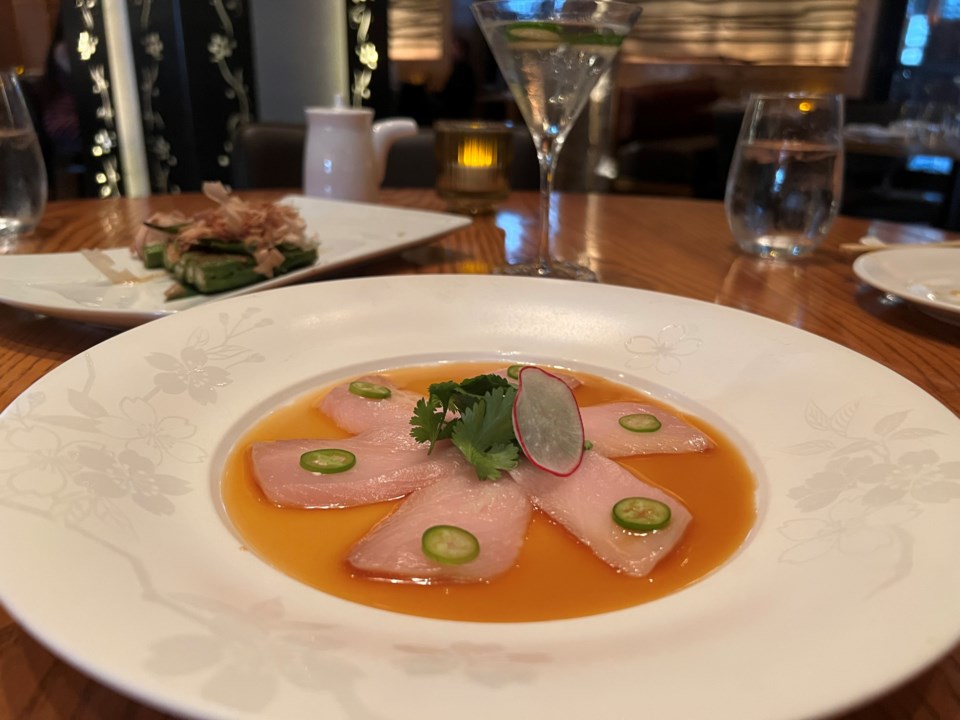Irasshaimase ("welcome") echoes throughout the restaurant. The chorus is familiar — and one that I heard on a regular basis for over twenty years when I called Japan home and one that our 15-year-old son, born in Osaka, heard for the first ten years of his life.
But here we are, him, me and my wife, at Nobu Dallas for dinner. Our son is decked out in Wranglers, a Justin button-up and Tecovas — his usual attire. But it wasn't always.
The influence of countries and cultures is undeniable — and at this restaurant, best summed up with chef Nobu Matsuhisa's most iconic dish, yellowtail sashimi jalapeño, which is, perhaps, one of the most influential sashimi dishes ever made and certainly the most influential ever made outside of Japan.
Born in Saitama, Japan, Matsuhisa lived and made sushi in South America, explaining why Nobu Dallas manager Katie Nguyen describes the restaurant to me as "modern Japanese with a Peruvian influence." The jalapeño isn't a common ingredient in Japanese cuisine, but Matsuhisa started using the pepper to replace ingredients he couldn't get and to add a flavor accent to the yellowtail. Now, this style of sashimi seems to be everywhere.
This isn't our first time at Nobu Dallas. Last time, I interviewed Matsuhisa who was in town for the Taste of Nobu event and ran into Fehmi Karahan, the mastermind behind the Fields development in Frisco. This is our son's first visit.
"This is the best," Louis says as he finishes the last piece of yellowtail. He says that after trying the shishito peppers. Then, when the black cod with miso arrives and after he takes a bite, he says, "No, this is the best.” Each dish that follows, he says, “No, this is the best. No, this."
Louis taught me about flavor. He was eight and on Christmas vacation here in Dallas, eating a bowl of Frosted Flakes. "These taste different," he said. Frosted Flakes are sold in Japan, but as he pointed out, they taste different. I spoon a moutful of American Frosted Flakes. He was right. They were different. Of course, they were.
Sure, the recipe is the same or similar, but all the endless permutations, from the different climate, different factories and equipment as well as the different water hardness all impact the taste. On a larger level, the food people eat in different countries defines their baseline flavors — and ultimately the food they cook. Even though Louis has gone full Texan, he grew up eating Japanese food.
Now, even as he wraps himself in Western wear and even as a Texas drawl supplants his native tongue, at his core, he is Japanese. This identity manifests itself strongly in what he wants to eat when he's not feeling well, the dishes he never tires of and what he’s always more than happy to gobble up.
I look across the table at Louis, as he devours another piece of sushi. He's 15. A young man. He plays football and has a nice girlfriend. I catch fleeting glimpses of him as a sweet boy, eating rice cakes at New Year's, digging up bamboo shoots to boil in spring and slurping somen noodles in summertime. These glimpses are fleeting and forever.
Don't miss anything Local. Sign up for our free newsletter.



